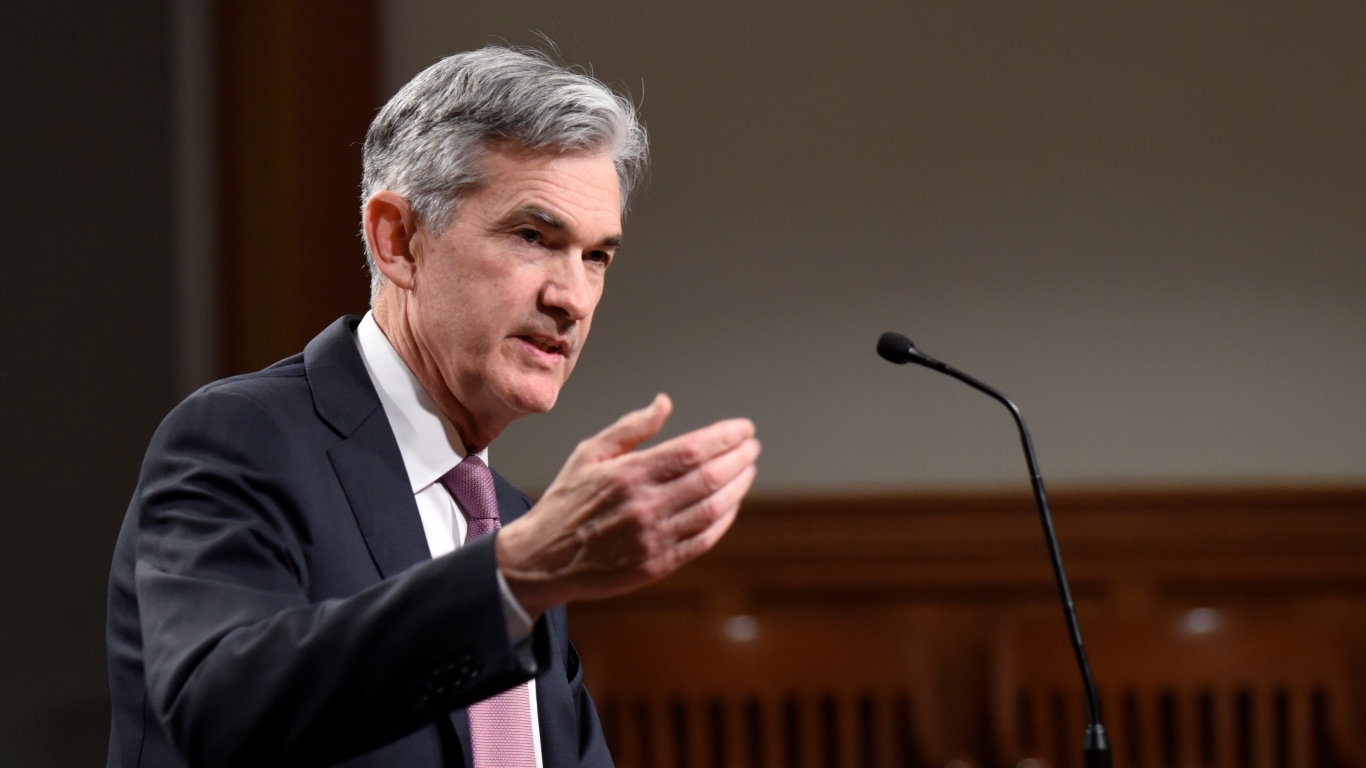Economy
Fed Chair Powell Sounds Extremely Different at Start of 2019 Versus 2018

Published:
Last Updated:

In 2018, Federal Reserve Chair Jerome Powell and his fellow Federal Reserve regional presidents seemed hell-bent on slowing down the economy with endless interest rate hikes rather than just trying to contain inflation. Now it seems that the Fed is again behind the curve, pondering headwinds rather than looking at the economic growth story. In an appearance in front of the U.S. Senate, Powell said that the economy remains strong but he warned that dangers are brewing.
Powell’s semiannual testimony brought the message that the Fed is watching the economy closely, and he has effectively noted that the Fed is prepared to change its policy if needed.
China and Europe were noted as areas of concern, as were Brexit issues and the pending trade negotiations. In effect, Powell has tempered some of the balance sheet wind-down fears after the Fed’s balance sheet peaked at $4.5 trillion in Treasury and mortgage-backed securities.
Powell’s testimony noted:
While we view current economic conditions as healthy and the economic outlook as favorable, over the past few months we have seen some crosscurrents and conflicting signals. Financial markets became more volatile toward year-end, and financial conditions are now less supportive of growth than they were earlier last year… We will carefully monitor these issues as they evolve.
Powell said that he and fellow Fed presidents are prepared to adjust the path of balance sheet normalization based on recent economic and financial trends. That balance sheet has been reduced to roughly $4 trillion after selling off assets. That wind-down did bring at least some concerns from the financial markets because the economy weakened during the fourth quarter of 2018 and that weakness crushed the stock market and drove bond yields into an area where there was a partial yield curve inversion.
Powell pointed out the economic weakness as follows:
In the last couple of months, some data have softened but still point to spending gains this quarter. While the partial government shutdown created significant hardship for government workers and many others, the negative effects on the economy are expected to be fairly modest and to largely unwind over the next several months.
Powell also discussed the lower level of inflation as under the Fed’s mandated target range and lower worker productivity, and he also followed the same path as prior Fed leaders by saying that the current trend of increasing the national debt is on an unsustainable path.
Powell is also scheduled to give testimony to the House of Representatives on Wednesday. Barring any new developments, those prepared remarks are generally expected to be identical to Tuesday’s prepared remarks.
Stay tuned.
If you’re like many Americans and keep your money ‘safe’ in a checking or savings account, think again. The average yield on a savings account is a paltry .4% today, and inflation is much higher. Checking accounts are even worse.
Every day you don’t move to a high-yield savings account that beats inflation, you lose more and more value.
But there is good news. To win qualified customers, some accounts are paying 9-10x this national average. That’s an incredible way to keep your money safe, and get paid at the same time. Our top pick for high yield savings accounts includes other one time cash bonuses, and is FDIC insured.
Click here to see how much more you could be earning on your savings today. It takes just a few minutes and your money could be working for you.
Thank you for reading! Have some feedback for us?
Contact the 24/7 Wall St. editorial team.